-
Posts
2,660 -
Joined
-
Last visited
Content Type
Profiles
Forums
Blogs
Gallery
Events
Store
Posts posted by hunyadi
-
-
Hello Gordon,
hello Charles,
here are the measurements and the weight of my Silber Grade of the Order of the War Merit of Hungarian Freedom:
Diameter: 45,5 mm, Height: 9,0 mm, Weight with ribbon: 26 g
For Info: I buyed this order and the other war decorations in a big presentation box. This box was, according to the seller, a specimen-box for the armed forces.
Best regards
Richard
Here is my observations -
Diameter: 45.5 mm (match)
Height: 6mm (but I think that Richard may have mis-done this? The Type II and III are also 6 - 6.5 mm in height only)
Weight: I dont have the most accurate scale - but 17 g with the ribbon is what I come up with.
Its not lead nor some cheap alloy that you see with the cast fakes of the 3rd Reich. - I have tried to bend it with hand pressure with no luck - its a fake right? why worry about breaking it...
As for the Box - you probably have the only other one - (at least known at this point) Did it come with a Hero of the Hungarian Peoples Republic - if so - dont hold back now!

 0
0 -
the reverse - this is also encountered often with a flet bakcing in the aproprite color for branch of serivce. Though this practice was completely custom and not in the military regs - but was tolerated

 0
0 -
It gets better - picked this one up this weekend. In 1948 this badge was created and allowed to be worn on the upper left breast pocket of the military uniform. This only lasted until 1950 when the organization was absorbed into MHS. Its a stunning one!

 0
0 -
Richard - thank you for these images - after reviewing them I think that the one I now have is probably one of the first "good" produced fakes of the HUPR - and a Type IV to boot! Just so that everyone is in the clear - I have retraced my offer of sale to the indivudal that asked to buy it. I dont want to be the first one out there to start spreaing questionable items about!
0 -
Well - in a move I am sure to regret - its for sale in the "for sale" section of this site. As I cant keep it all send me a PM if you want it.
0 -
WOW!!!!!!!!
OMG!
Rarer than an RK certainly.
The golden rule on the Antiques roadshow- Never clean anything!

Well - not like and RK - I cant get 12K for her. But its more along the lines of a Interwar PLM in my book - its clearly from after the war and was sold as a replacement for soldiers to wear, esp after the Bela Kun regin of terror. But its still has the tinge of history and of a great act of bravery that went along with it.
As for controling the zink-pest. I have found Vaseline to do wonders in restoring finish and actualy nearly reversing the damage done. But the beeswax is also a good idea to seal it afterwards.
0 -
and the reverse -
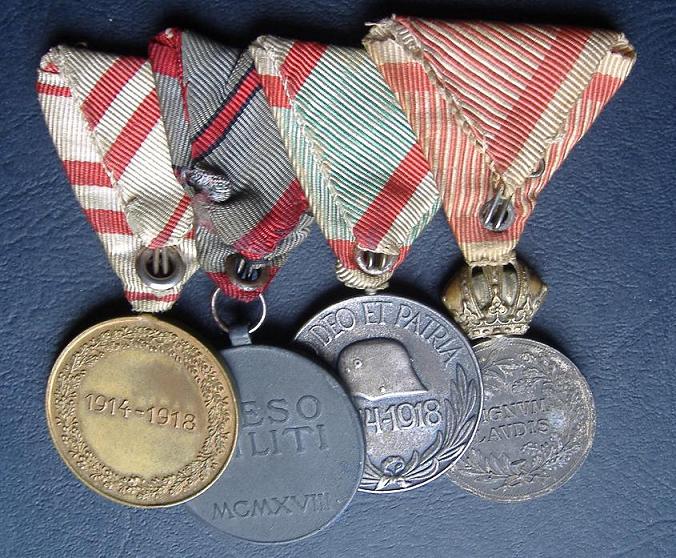
 0
0 -
About a week ago I was at one of my favorite stores to buy goodies at. Of course the same store buys things from the public to re-sell them. In walked an older couple and they dropped on the counder a whole bunch medals. I noticed that many of them appaered to be from a single source. I looked on in awe at what was being sold and my little heart wanted to start a bidding war with the shop owner - but patience prevailed as if i did such a thing I am sure I would never be allowed back in the store. Well - I can honestly say that the dealer gave the couple a price that was a complete rip-off for what they had brought in. Then after the couple had left, I offered to buy them outright and for a porfit to him - but he said he needed to think about what to sell them for...(UGH!) Then the next week - he has them for sale but the national defense cross had already been sold to another collector who probably didnt notice the consitent wear for the ribbons or the medals. But instead bought the most valuable. Here is what I was able to recover and it shows the medals as would have been worn from 1934 to 1939. I doubt I will ever get the National Defense Cross reunited - but who knows? The National Defense Corss was given to those individuals who helped in some manner to overthrow the Bela Kun Hungarian Soviet Rpublic.
They are a little worn and the Signum Laudis is a zink (probably post war manufacture) based (but the crown is not) - the ribbons are worn and faded and the ribbon for the Signum Laudis had swords on it at one time. Its not the greatest - but its as good as it gets.
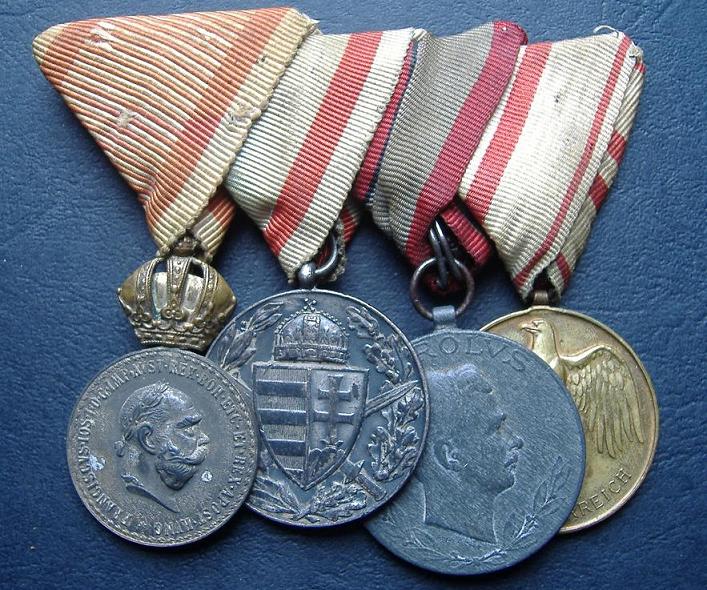
 0
0 -
and the reverse - notice the zink pest.

 0
0 -
A few days ago I picked up a zink based Karoly era Large Bravery Medal. I had been looking for a zink based one to add to my collection as these were made by jewelyry stores to sell as replacements to veterans. In the 1919-22 period many examples of these are found and they were struck using the warteime dies and bear the appropriate marks - however they are made of zink. I found this exampe and hemmed and hawed about the fact that it looked to me like someone had spray-painted it gold to make it into a gold grade bravery medal (very rare!) My intention was to take it home and scrub off the gold finsih. When I got home I prepared to do the process, but held off when I noticed the ring and the counter ring (not made of zink) were not painted but rather guilded in gold! I then inspected the few spots of zink pest and niticed that the "pest" areas had no traces of gold on them, making it appear to me that the pest had developed after the gold finsih was applied. Then for the litmus test, I showed the medal to the currator of orders and decorations at the Hungarian Military Museum and he confirmed that it was indeed an inter-war period piece and advices me not to clean it or to return it! (as I was planning on doing as I thought it had been too dinkered with!) - its now a welcome addition to the collection!
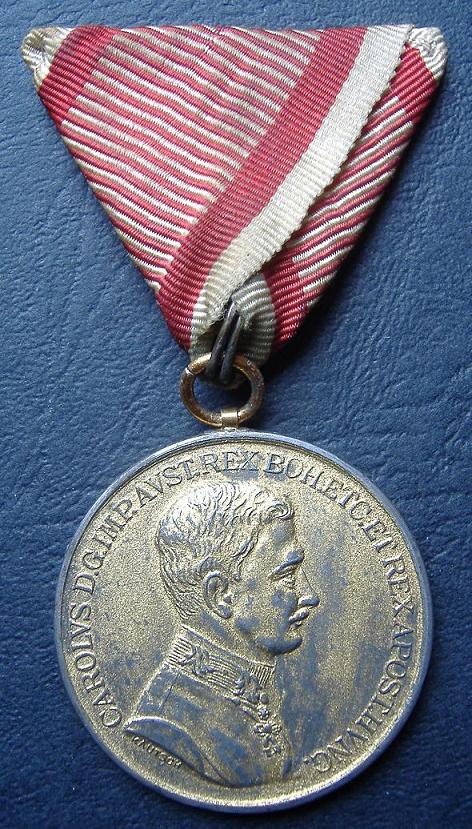
 0
0 -
and the reverse - the casting is not bad and not what you find on the "made it in my backyard" quaity - But it appears to be a fake!
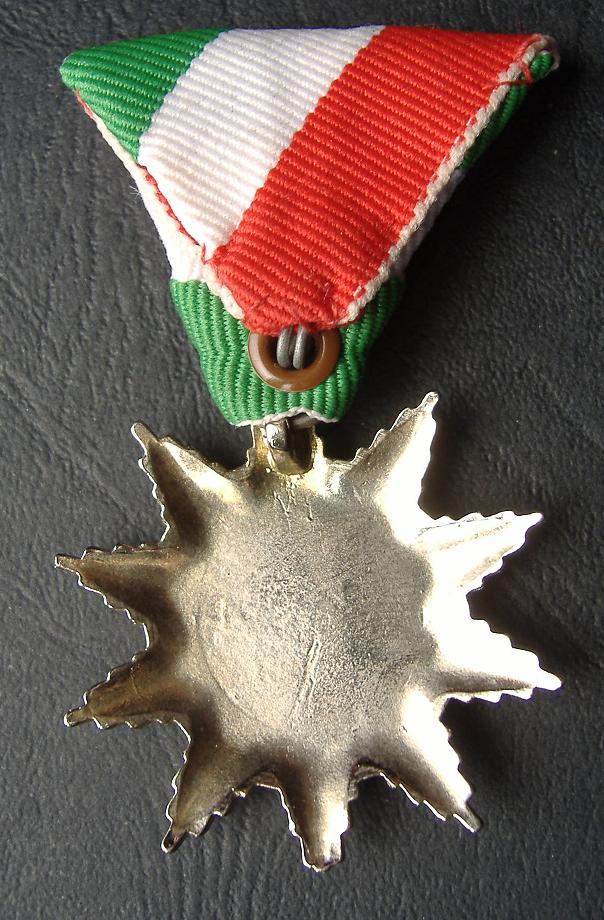
 0
0 -
Not going to say much about this one - but if you want to PM me about it - feel free to, I can give you more deatils.
Somewhere in the early / mid 1980's I would gather to ventrue from the quality of the pieces. The Hungarian Defense Forces comisioned the creation of medals that would be issued in the event of WW3. However this one seems to be a very good fake, and its now the first truly questionable item that I have run across! Be warned - it seemd to fit the finish and quality of the one that I held in my hands!
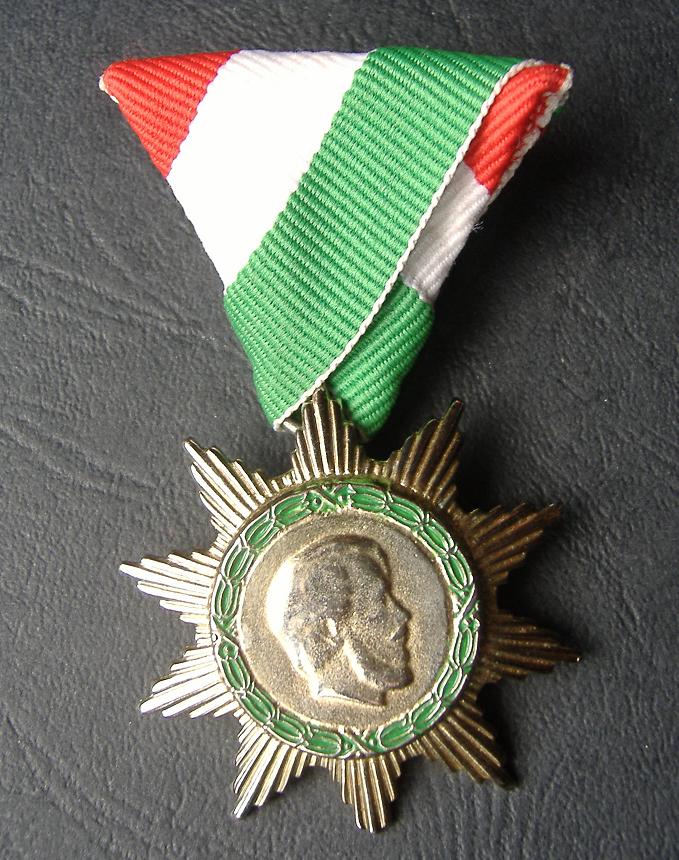
 0
0 -
Technically - I think the Kivalo Munkaert and Dolgozol fit into a similar pattern and should be placed in the same category.
0 -
Nice foot-work! Yes - according to that site they were a sprots organization that was intended to uplift the pyhsical prowess of the worker (get them fit so that they could be better workers!) But due to organizational problems and such the organization slowly disbanded until disapearing in 1954.
0 -
nope - wish it was - that one is I recall Hauptmans - ealry type with "E" prefix to a rather low serial number...
0 -
And for those who complain about 3rd Reich "Zinkers" - another interesting pin/badge for the Small Industry Association - fantastic and beautiful enamel to the top - but old zinc on teh bottom - no traces of the finish, but the enamled star remains (though it looks like the zinc also wants to suck that in too!)

 0
0 -
This has to be one of the more 'cheaply' made badges - Its made of aluminum with pained on enamel. Very light and very unique. My best guess is an "excellent worker" for a postal program in the Young Pioneers program. Probably from the 1980's from the construction.
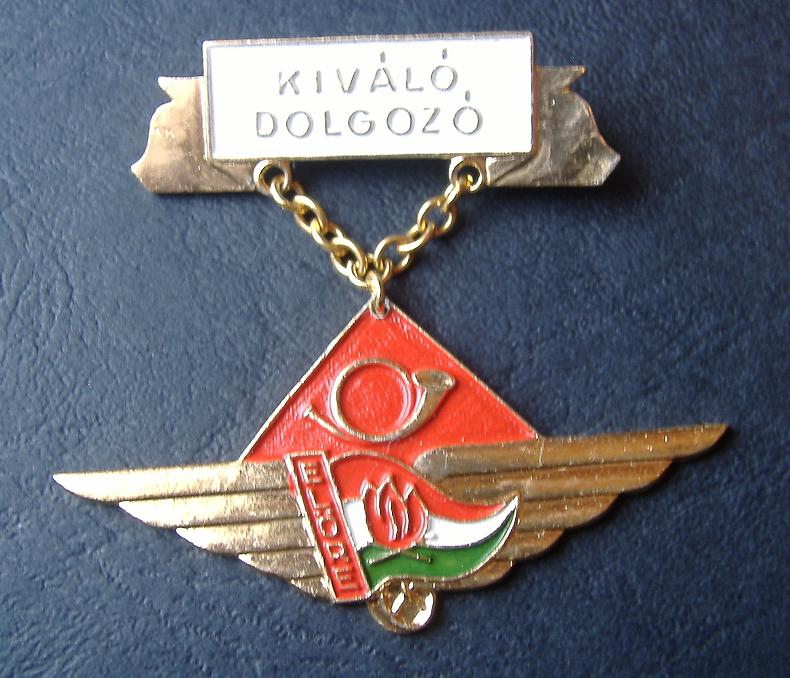
 0
0 -
The interior of the box shows bears a nice, but worn 1953 marked badge. The insert has come loose over time and is now unglued from the base (so I could inspect the strange covering in the hidden parts - everything uppon inspection tells a tale that this thing was made this way from the beginning)

 0
0 -
Here is an odd one - not the typical case for a Sztahanoviszta. Its covered in what I would guess is something like fancy Christmas paper - its shiny and has swirl marks in it. Devoid of coat of arms. Uppon inspection the covering has been on there for quite some time and it looks like it has always been on there - its rather 'feminine'. The push button feature is also not too comonly encountered - my guess is a female recipieint and this also gives rise to the notion that there may have been the opportunity to purchase private "custom" boxes to display the badges in. (just a theory at this point)
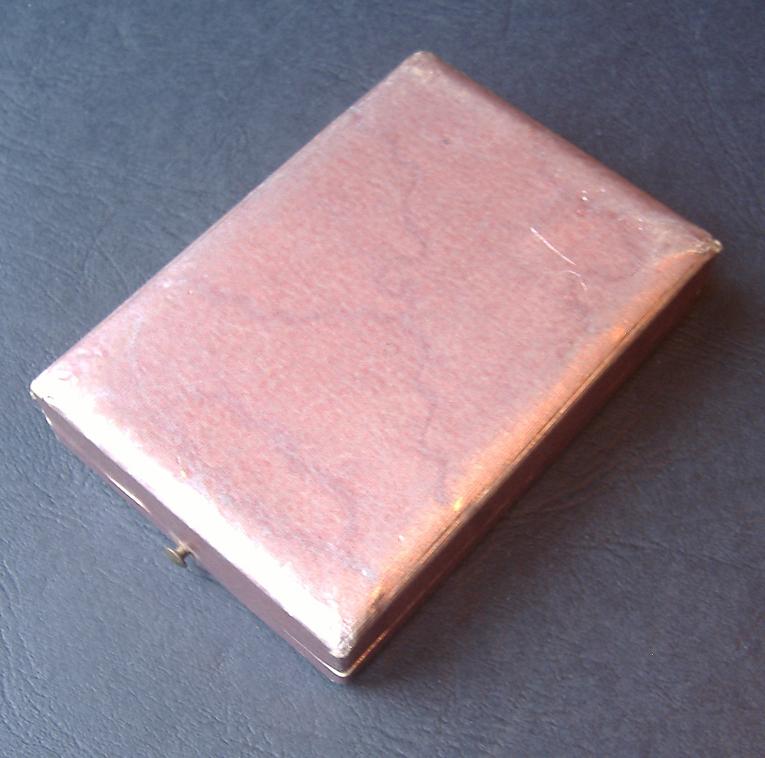
 0
0 -
An interesting set of pins - not exactly sure what they are for - I believe that MHK is "Munka Hivat?s K?pz?s" (Workers Trade Formation) (??)
Apparently they came in silver and gold grades - of interest is the silver grade on the left - if you look hard enough you can see that the banner the woman is holding is the Hungarian flag with the Kossuth Coat of Arms. Date is obviously 1949..Then we see on the Gold grade that the flag now has the "Rakosi Coat of Arms" also from 1949. Would love to know more about these....

 0
0 -
The second is Erich Ewald Emil Heyne finished the war as an Offizierstellvertreter having served with the 2nd Bty, Feld Artillery Regiment Nr. 46, 20th Artillery Brigade, 20th Division, 10th A.K., 2nd Army.
Again, all documents, or copies are present. It is interesting to note that he was nominated for the Brunswick War Merit Cross on 30 November 1914; so, in view of the fact that that the award was founded the month before, October 23rd, he surely was one of the earliest recipients. A genuine two year front line service clasp is ?icing on the cake? - calling Konditor Krause!
I hope that you enjoy these humble groups. Best wishes,
Wild Card
Interested in the document for the Austrian Bravery Medal - any details to share on that one? I must say -


 those groups!0
those groups!0 -
OK:
Language question...what exactly is the difference between "dolgozo" and "munka "?
Labor and worker?
Does dolgozo have some sort of political connotation?
Zsolt may be able to help as he has more of a connection to the era - but as the medal and the council was called the "Munka-Paraszt..." or "Workers and Peasants" - munka refers to a more 'political' nature I am sure. Dolgozo - can go both ways, labor/work - more of the actual action, not a title. Just my interpretation.
0 -
Hi Charles,
Not Crop Harvester. I try to explain what it means...
In the beggining of the '50s, there was this system that the crop were taken from the peasants as to make the supply of people of the cities. The peasants had to deliever eggs, fat, meat, cereals etc in precribed quantity in every year. This had a self-imployed ministry. This was "Begyűjt?si Miniszt?rium". The worker of it was the "Begyűjt?s Dolgoz?ja".
Ah - yes - now I recall - something similar would be "Service of Supply Ministry" (Quartermaster - as to my USA mind, we didnt have such a system - but the QM is where the soldier of the 'state' gets all his / her needs) . "Harvest Ministry" would also work in trying to understand the system as "Harvest" can libberaly apply to all food goods if you think hard enough. To my understsanding this was a national program that tried to provide the nation with all of its food stuffs without the impliment of a free market to fluctuate prices. Prices were fixed. ? close ?
0 -
And one of my new favorites to collect - Excellent Hungarian Civil Avaition Worker. Its a breathtaking badge - wish I can find one from the pre 1956 era...

 0
0




True 1956 Revolution Tunic
in Central & Eastern European States
Posted
Just to bring more to light - in my ever current mission of tyring to find tunics from before the revolution, has been dismal at best. Here is one that I recently got. Its an AVH (State Security) Tunic as recognised by the manufacture stamp and by the dark blue piping around the cuff. During the revolution there were many accounts of AVH personel remving their collar tabs and shoulder boards to avoid detection as many were lynched (in front of reporteres no less) - so much for this poor chap who was issued one with the cuff piping. Also many accounts give details of Revolutionary elelmnts raiding the AVH offcies and warehouses (and military barracks) and taking off with uniforms. I suspect that this AVH officer did the former as there is evidence that the shouder boards were on it for some time and that at one point it did have collar tabs. Sadly, I find it unethical at this point to restore it to the pre October of 56' condition